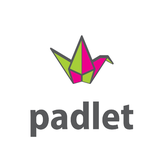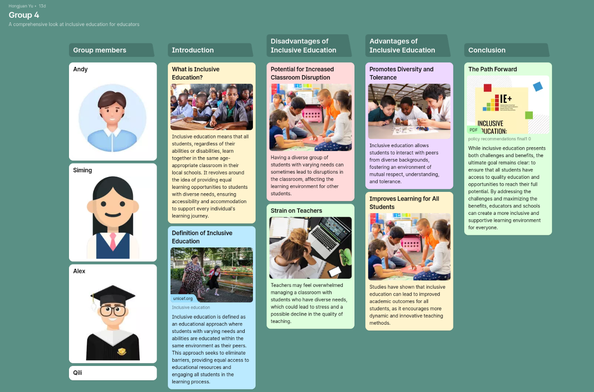by Hongjuan Yu, English Language Centre, School of Languages, Xi'an Jiaotong-Liverpool University

Padlet is a digital platform that allows users to create and share collaborative online bulletin boards. It can be used for various interactive class activities. This activity is going to demonstrate how to use Padlet as a platform to check students’ homework and provide constructive feedback. At the end of a semester, this visual record can be used as one criterion when awarding certificates to excellent students.
This project enables teachers to:
- Streamline students’ homework visually;
- Enhance students’ homework engagement;
- Provide constructive feedback.
Activity length
30 minutes
Course area
Homework Checking and Feedback
Level
All levels
Target skill(s)
Self-regulation, reflection, and collaboration
Set-ups:
Before the first class of a semester, create a padlet for each of your EAP groups.
Step 1:
If you are an XJTLU teacher, log into your school Padlet account via this link: https://xjtlu1.padlet.org/.
Alternatively, you can register a personal account with an email address via this link: https://padlet.com (Image 1).
Step 2:
Click the “+ Make” button on the top (Image 2).
Step 3:
Click “Create with AI” (Image 3).
Step 4:
Write a prompt based on your needs (e.g., Create a padlet with 10 sections titled with the following names and number the names: copy and paste your student names) and click “Create” (Image 4).
Step 5:
Click the wheel button on the right side of the created padlet (Image 5), and tailor the settings based on your needs (Image 6):
- You may name the padlet as your class number.
- Under “Layout”, “Format”, choose either "Wall" or "Timeline".
- Under “Engagement”, enable “Comments” and choose “Reactions” to provide homework feedback. My experience is that "Star" and "Score" reactions are useful for grading students’ homework.
- You may tweak other settings based on your preference. Then close settings and go back to the main page.
Step 6:
Click the first button “Open share panel”. Choose “Writer” for visitor permissions and then choose “Secret” for link privacy, so only students with the padlet link can access it and they are not required to register an account (Image 7).
Procedure:
Step 1:
Before a class, log into Padlet and all the created padlets can be found on your dashboard (Image 8).
Step 2:
Click the dropdown menu of a padlet. Copy the link (Image 9), save it as a “URL” resource on your teaching space (e.g., a Learning Management System platform like Moodle), and name it with the group number (Image 10 is an example using the Learning Mall platform, which is an LMS platform powered by Moodle).
Step 3:
During the first class, a teacher can guide students to locate the padlet link on their teaching space, and then demonstrate the process of starting a homework post. The instruction can be, for example, “Click the ‘plus’ under your name and you will see a pop-up ‘publish’ interface. Use the lesson number as a subject and type your homework in the text area or upload a word file or a picture”. Then, for the entire semester, students can be instructed to post their homework autonomously via the same link (Image 11).
Step 4:
After a class, teachers can grade students’ homework and/or leave simple comments, which takes approximately 20 minutes for each group (Image 12). Peer feedback and interactions can also be allowed and encouraged on the padlet.
Step 5:
In the first 10 minutes of the next class, teachers can showcase the padlet page and selected sample homework answers to all students. We can point out what the students did well, as well as the common issues in their homework.
Caveats and alternatives:
Caveats:
- This kind of homework can be assigned as frequently as the teacher’s workload allows. Checking submissions and providing feedback can be time-consuming and increases a teacher’s workload.
- Avoid assigning homework such as recording videos on Padlet, because it takes too much time to process when checking their homework. For this type of homework, teachers may instruct students to attach a link to a video hosting platform where students can upload their videos (such as Mediasite).
- Padlet may not be ideal for any formal assessments since students can easily post on behalf of others.
Alternatives:
- Presentation: the “slide show” function can present all posts as different slides, so teachers can easily add a follow-up presentation activity after homework submission.
- Group poster: under “Share”, “Export", there is a "save as image" function, which can allow students to make a Padlet page, and export all posts as an image. If printed on A3 paper, a poster activity can then be arranged (Image 13).
Image 13















Add comment
Comments